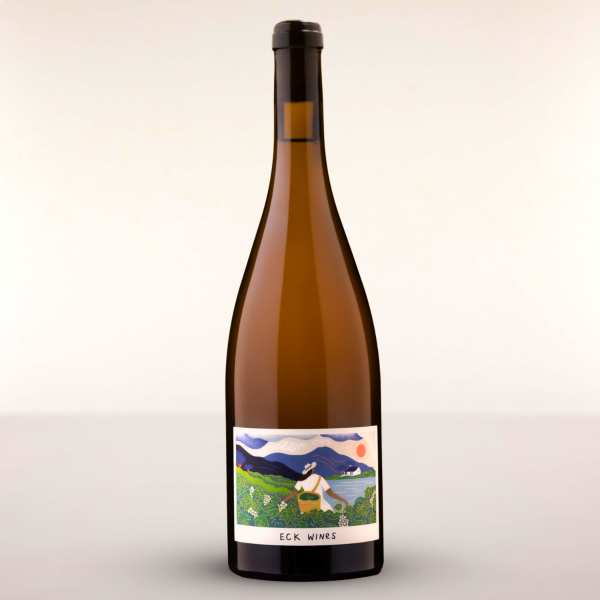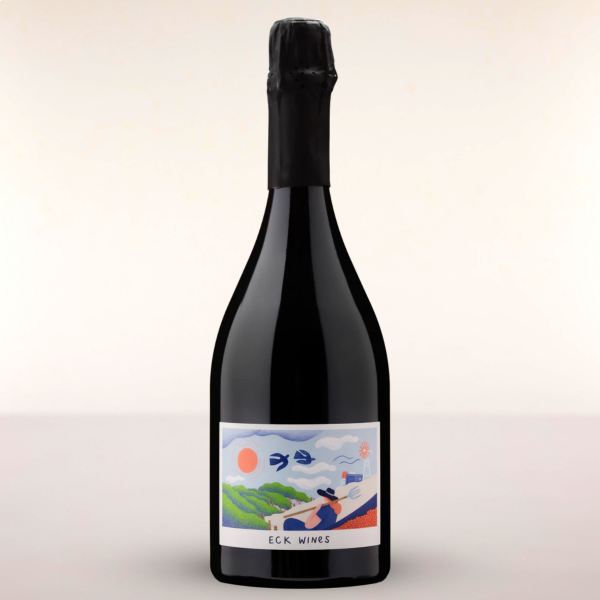Place
Our wines are often inspired by a sense of Place. The vineyard is an incredible ecosystem. It continues to amaze me that every year the vine can be cut back so heavily, yet it grows so vigorously and produces such incredible fruit; year in, year out. There are so many factors that influence the fruit we pick, that is used to make the wine we drink. To name a few: the weather, amount of water (rainfall and whether the vineyard is irrigated or dry grow), nutrients in the soil, exposure to sunlight and, of course, ripening conditions. Some of these elements are entirely out of our control. For example, for the 2020 vintage, we had above-average rainfall in Spring, crazy hot weather in early December (2019) which affected bud flowering and at harvest, unprecedented rain which slowed ripening. Therefore, the factors that we can alter are so incredibly important. In September 2019, I attended a field day workshop with Dr Mary Cole, who spoke at length about creating a "soil web", one where soil microbes prosper and organic matter is used to feed the vineyard. When one element in the web is disturbed, the entire biological system can be disrupted. Now I'm no expert in this field, but Dr Cole's words really resonated with me. And so, it is important to us that the fruit we pick is as sustainable as possible, where soil health is considered and harsh pesticides and synthetic fertilisers are avoided. For our own vineyard, this means that every year we try to improve the way we do things. And for the vineyards that aren't our own - we work closely with our growers, with whom we have had long-standing relationships, to ensure their farming practices are aligned with our own practices and beliefs.
Lakeside Vineyard, Knowsley
Our little one acre of Shiraz vines wer planted in 2003 by Peter and Sharon Armstead. Located only 150m from the northern banks of Lake Eppalock in Knowsley, this unique easterly facing site has a shallow strip of Cambrian soil snaking through the middle of the vineyard. The remaining soil is clay loams. Comprising only 25 rows and approximately 600 vines, our vineyard was spur pruned from 2003 to 2018. In the winter of 2018, we decided to transition to cane pruning, for the longevity of the vines. We use no herbicides, hand weed and use only a very small amount of spray to prevent fungicide and disease in those wet and humid months. The fruit is hand-picked every year by us, with the help of family and friends. We start early to beat the heat and follow up with a long booze lunch on the front deck overseeing the lake. In 2019, the fruit from our Lakeside Vineyard became our Wirilda Bay "Lakeside" Syrah.
Mount Burrumboot Estate, Colbinabbin
Located at the northern tip of the Heathcote Wine Region, in Colbinabbin, Mount Burrumboot Estate is owned and operated by Cathy and Andrew Branson. The vines were planted in 1999, and include both Marsanne and Shiraz, as well as other red varieties. Being farmers for generations, the Bransons heed to the philosophy of minimal intervention and sustainable practice: they care for their soils, follow organic practices and encourage the diversity of soil microflora, so that each vine receives natural nutrients. Irrigated by the Waranga-Western Channel, the vineyard runs north to south over deep, fertile, ancient Cambrian soil. A combination of hand-picking and machine harvesting is undertaken every year. In 2020, the fruit from this vineyard became our "RAD" Late Harvest Dessert Marsanne.
Dead Horse Hill, Toolleen
A unique 4-acre Shiraz vineyard located 20km north of the Heathcote township in Toolleen. Planted in 1994 by Jencie McRobert, the dry-grown site is located on mineral-rich Cambrian soil. At an altitude of 203m and on an easterly facing slope, the berries are are always intense and full of punchy tannins. Following the principles of sustainable viticulture, Jencie hand-prunes the vineyard every year and uses organic, sustainable fertilisers to enhance soil quality. The fruit is hand-picked by Jencie, Russell and their family and friends to ensure the bunches remain whole. In 2020, the fruit from this vineyard became our Dead Horse Hill Shiraz (only 75 bottles were produced).
Merindoc Vineyard, Tooborac
A unique site at the southern end of the Heathcote wine region, owned and operated by the Shelmerdine Family. Being just on the cusp of the Heathcote-Macedon Ranges divide, the landscape is studded with ancient granite boulders. The vineyard (Chardonnay, Riesling and Shiraz) was planted in 1994 and runs north to south at an altitude of 321m. To the north-west of the vineyard is the McIvor Creek, fast flowing after the winter rains in the Macedon Ranges. The soil is granitic; ironstone and granite sand, with sections of yellow and black cracking clays. The cooler night temperatures over harvest allow the berries to ripen slowly on the vines, developing floral and bright fruit characters in the fruit. The fruit has always been hand-picked. Sadly, the vines were pulled out in the winter of 2020. In 2019, the fruit from this vineyard became our Blanc-de-Blanc and in 2020, it became our Charlotte Chardonnay.
Coliban Glen Vineyard, Kimbolton
Located on the western banks of Lake Eppalock is this beautiful vineyard. It's easterly facing, so catches the morning rays, and is irrigated by the Lake. Planted in 1996 on loamy soils and owned and operated by Peter Raeburn, this distinctive site produces Shiraz and Cabernet Sauvignon with crisp acidity every year. Being in the southern pocket of the Heathcote GI, the vineyard is slower ripening, allowing the berries to develop floral and fruit notes. The vineyard is hand-pruned and hand-picked, and the passion Peter has for his vines shows through every year in the exceptional fruit he produces. In 2018, the fruit from this vineyard became our Matilda Reserve Shiraz.
Play
The winery is our playground. We like to have fun.
We make our wine in Newham, at Hanging Rock Winery. There are a few reasons for this:
- We grew out of our little tin shed in Knowsley. This is where Peter Armstead, the previous owner of our property, made all of his wine from 2003 - 2017. However, when we embarked on this adventure, we (crazily) decided to take on an extra 5 tonne of fruit (in 2018) and the little shed just wouldn't have cut it for 15 tonne of fruit we crushed.
- I have been able to work alongside some incredible winemakers to learn from them and also get help when things go a little pear-shaped.
Rob Ellis, the chief winemaker at Hanging Rock Winery, has incredible knowledge and experience, that he is willing to share and pass on. A great friend too, we always enjoy a bottle (or few) together.
And Etienne Mangier, who was the Assistant Winemaker at Hanging Rock Winery up until the end of vintage 2021, but who also owns and runs North Wine, a boutique label out of the Macedon Ranges focusing on premium natural wines. Eddy's passion for wine is contagious.
Process
Deciding when to pick the grapes is one of the most critical jobs of all. The ripeness of the fruit, including the sweetness and acidity level, ultimately determines the type of wine we will make.
There are many factors at play when determining when to pick. The most crucial of these is the weather, as heavy rain just prior to picking can dilute flavour, send sugar levels backwards and even result in split berries and bunch rot. Similarly, a sudden heatwave may swiftly increase sugar levels, without allowing the flavour to develop in the berry. In other words, a high alcohol wine without much flavour. Therefore, when deciding the day to pick, the weather forecast is essential.
To me, whilst numbers (baumé and acidity readings) are important, the flavour in a berry sample is paramount.
As for vinification, it's very much dependent upon the vintage and grapes as they arrive to the winery. I sometimes adjust acidity to keep freshness in the wine, although aim to do this as little as possible.
Most of my wines are naturally fermented, although some are inoculated if I'm concerned about a stuck ferment. I use a combination of vessels for my ferments: stainless, oak barriques and puncheons and most recently, amphora. I occasionally cold soak the grapes (prior to fermentation) to enhance colour and flavour and the length of maceration depends on the wine. I closely monitor the temperature during vinification to ensure colour, tannin, aroma and flavour is not lost.
Some of my wines are aged in barrel, whilst others are bottled straight away. We regularly use natural cork, as I believe there's a real sense of occasion opening a bottle of wine with an old fashioned corkscrew. Natural cork also lets the wine "breathe" during aging.
In terms of our labels, I have loved working with various artists, illustrators and graphic gurus to create an eclectic range. As every vintage is different and so no two wines are the same, it's be fun to collaborate with different and talented people.
Categories
Products
- Add to Wish List More information
- Add to Wish List More information
- Add to Wish List More information
- Add to Wish List More information
- Add to Wish List More information
- Add to Wish List More information













